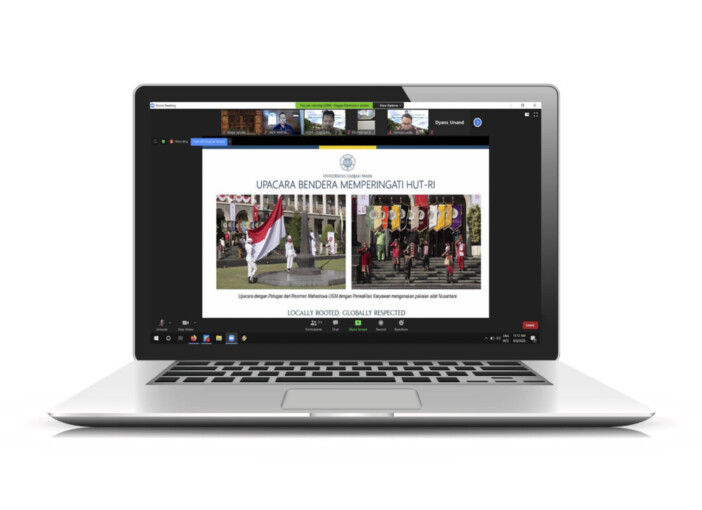
Protocol activities are activities associated with the rules regarding the layout of the place, the ceremony, and the order of respect. Duties carried out as a form of honor for someone according to their position and position in the state, government, universities, or society.
“This will be very valuable if we prepare carefully so that the implementation of the service, especially in higher education, can run well and smoothly,” said Prof. Dr. Ir. Bambang Agus Kironoto, as a Vice Chancellor for Human Resources and Assets UGM opened the Management of Public Higher Education Protocol on Tuesday (8/9).
According to him, the event’s success depends on the plan and the protocol prepared for the activity. Although sometimes it has been well organized, still, there must be some implementation that unexpectedly happens.
Especially when you have to welcome super VVIP guests, there is a protocol that applies in their environment with some required adjustments so that activities can run well and smoothly.
“Numerous times UGM has received state guests, from the central government, ministers, TNI leaders to the president. We need to be well-prepared for this kind of thing as possible so that the activities will run well,” he explained.
UGM is also accustomed to welcoming guests from other countries, both the government and the kingdom, who demand specific standards, both from the security and other aspects. Such a thing without the support of well protocol understanding, it is feared that the event will not run in accordance with the rundown.
“Recently, the rules related to the protocol have been managed in Law No. 9 of 2010 concerning protocol, and thank God, the Ministry of Education and Culture is currently preparing a draft on the protocol which shortly can be ratified. It can later become one of the references or references. in preparing protocol in higher education,” he said.
Manifes Zubayr, SE., MM., Ak, as Management Administration, General Bureau, Kemendikbud also conveyed the same statement. According to him, protocol plays a vital role in providing service activities or official events. Sometimes they have to make adjustments to the protocol guidelines so that the leadership’s official duties run smoothly.
“The joining of higher education to the Ministry of Education and Culture is related to many things that must then be harmonized. One of them is the rules or guidelines for organizing academic events in the higher education surroundings,” he said.
Manifes admitted that the Ministry of Education and Culture is now reformulating the latest regulations in the Permendikbud forum regarding protocol guidelines. Hopefully, the draft Permendikbud on the protocol will later be utilized as a reference for implementing activities within the Ministry of Education and Culture.
“Hence, I hope the support of all parties so that the draft regulation of the Minister of Education and Culture on the protocol can be ratified this year,” he pleaded.
Simson Leider Nadeak, S.Sos., M.PUB.POL, Head of the Sub-Section for Program Support of the Presidential Secretariat Protocol, as the speaker revealed that a protocol is a series of ceremonial rules in all official activities regulated in writing or practice. It definitely includes forms of respect against the state, head of state, or minister position, which is commonly found in activities between nations. Therefore, according to him, the protocol is an art and science in regulating.
“Currently, as we have heard, why we called it a health protocol instead of health principles in dealing with Covid-19, meaning that this is the main thing to do in dealing with the Covid-19 pandemic in order to break the chain. It is the same as when carrying out a protocol task, what is the main thing to do, “he explained.
Bearing out the main task, said Simson Nadeak, a protocol person should uphold the ABCD principle. First, A (audience) is expected to understand all audit protocols because the audience can be officials, protocol friends themselves, the public, or the audience.
Second, B (behavior), the protocol is expected to provide uniform and the same understanding and practice in treating standard-setting protocols. While C (condition), this is related to different regulatory patterns.
“That there are different conditions, there are other processes and various treatments. It is hoped that the same institution should not show frontal differences or striking differences. While D (degree) is a benchmark, we must mutually agree to some results. This result is the art of protocol regulation,” he explained.
Besides the principle of ABCD as the art of regulating protocols, said Simson, everything related to protocol work must be protected by law. Laws can be in the form of regulations, internal rules, such as the chancellor’s rules.
“Is the rule binding? Yes, it is, because they become technical guidelines in guiding our daily work,” he added.
Drs. Gugup Kismono, MBA., Ph.D., as Secretary of the UGM Chancellor, added that the event’s criteria to be successful if the event or activity can run smoothly. Besides that, the event can provide comfort for all parties.
“Another measure is that the event is interesting and not boring, brings a happy atmosphere, and has a minimal error rate,” he said.
Haryanto, S.E., M.M, Head of Sub-Section of UGM Protocol, said that the Public Higher Education Protocol Webinar held by UGM Public Relations and Protocol was attended by 216 participants, 110 PTN, 17 LLDIKTI, and 89 PTS. Also present were several from Official Universities and Central Agencies.
Hopefully, the National Protocol Webinar can be a means to coordinate programs and improve understanding protocols. It also supports and strengthens the working network among the extended family of the Ministry of Education and Culture, which allows enhancing the responsibility of all stakeholders in realizing a successful event.
“Being a professional protocol means to become a role in positioning oneself as a bridge that can function as a liaison, and a protocol must hold three principles for success, namely communication, coordination, and collaboration,” he said.
Author: Agung Nugroho
Photo: Firsto
Translator: Natasa A

